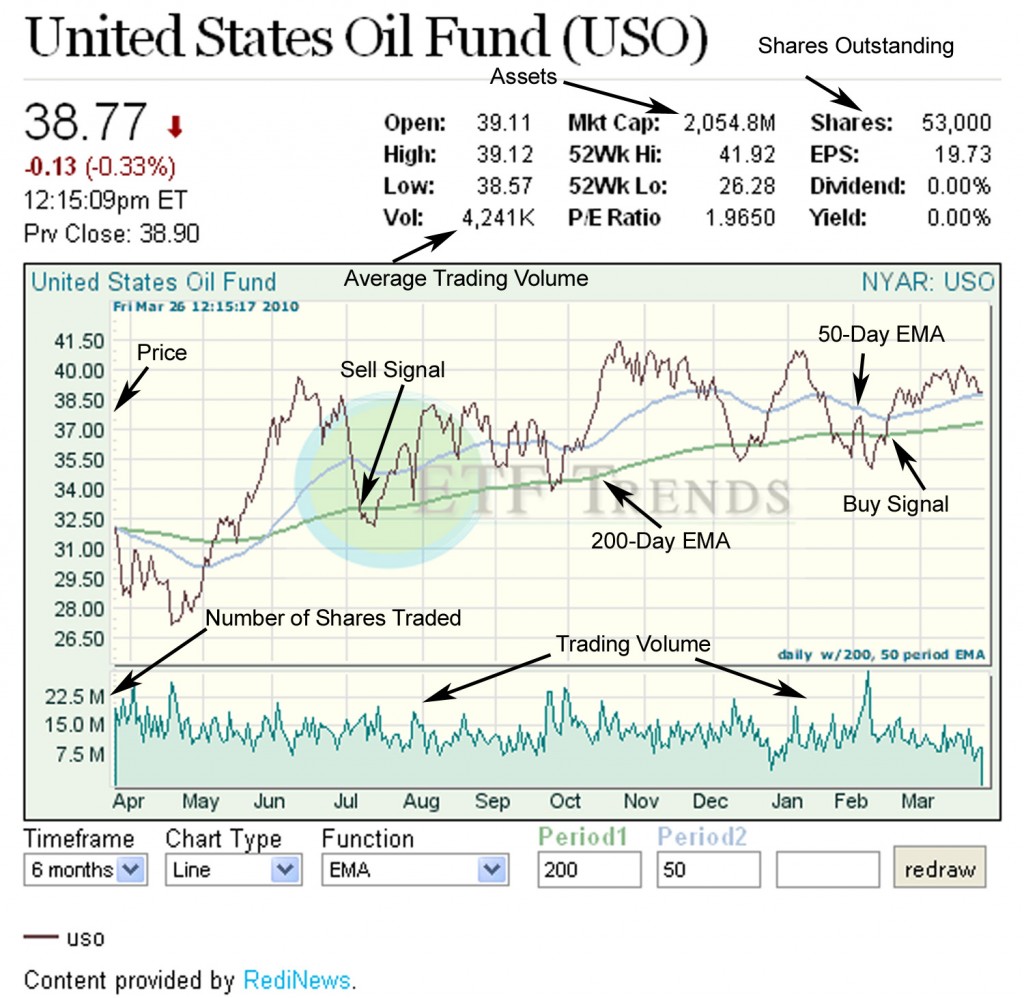As an investor, there are plenty of things you should know, but one of the most key things is how to read a chart. After all, a chart’s appearance will be one of the key factors in your decision to buy, sell or hold and exchange traded fund (ETF).
You can use ETF charts the same way you would use charts to track and trade single stocks. Trang Ho for Investor’s Business Daily reports that buying high-volume breakouts from cup with handles, double bottoms and other reliable base patterns, along with pullbacks to the 10-week moving average, offers the same results with ETF charts as for stocks. [Stock or ETF?]
Here are some major points to consider when taking this approach with ETFs:
- ETF volume is misleading because unlike stocks, which have a fixed number of shares, ETF shares can be continually created and redeemed according to demand.
- With ETFs that only trade a few thousand shares a day, a small amount of buying could drive the volume bar higher. A jump in volume could indicate strong institutional interest, rather than an actual price hike.
- The same sell rules that you’d apply to stocks would apply to ETFs, as well. In fact, ETFs are less volatile than single stocks, so in many cases you may find yourself selling less frequently. But in either case, trend following with the 200-day moving average can apply.
As always, we suggest having a simple strategy that you can use. Our strategy is trend following by using the 200-day moving average. You can read more on this strategy and learn to use it yourself by grabbing The ETF Trend Following Playbook. [How Trend Following Can Help You.]
For more stories about ETFs, visit our ETF 101 category.
For your handy review, here’s a roadmap to one of our charts on ETF Trends:
The opinions and forecasts expressed herein are solely those of Tom Lydon, and may not actually come to pass. Information on this site should not be used or construed as an offer to sell, a solicitation of an offer to buy, or a recommendation for any product.
